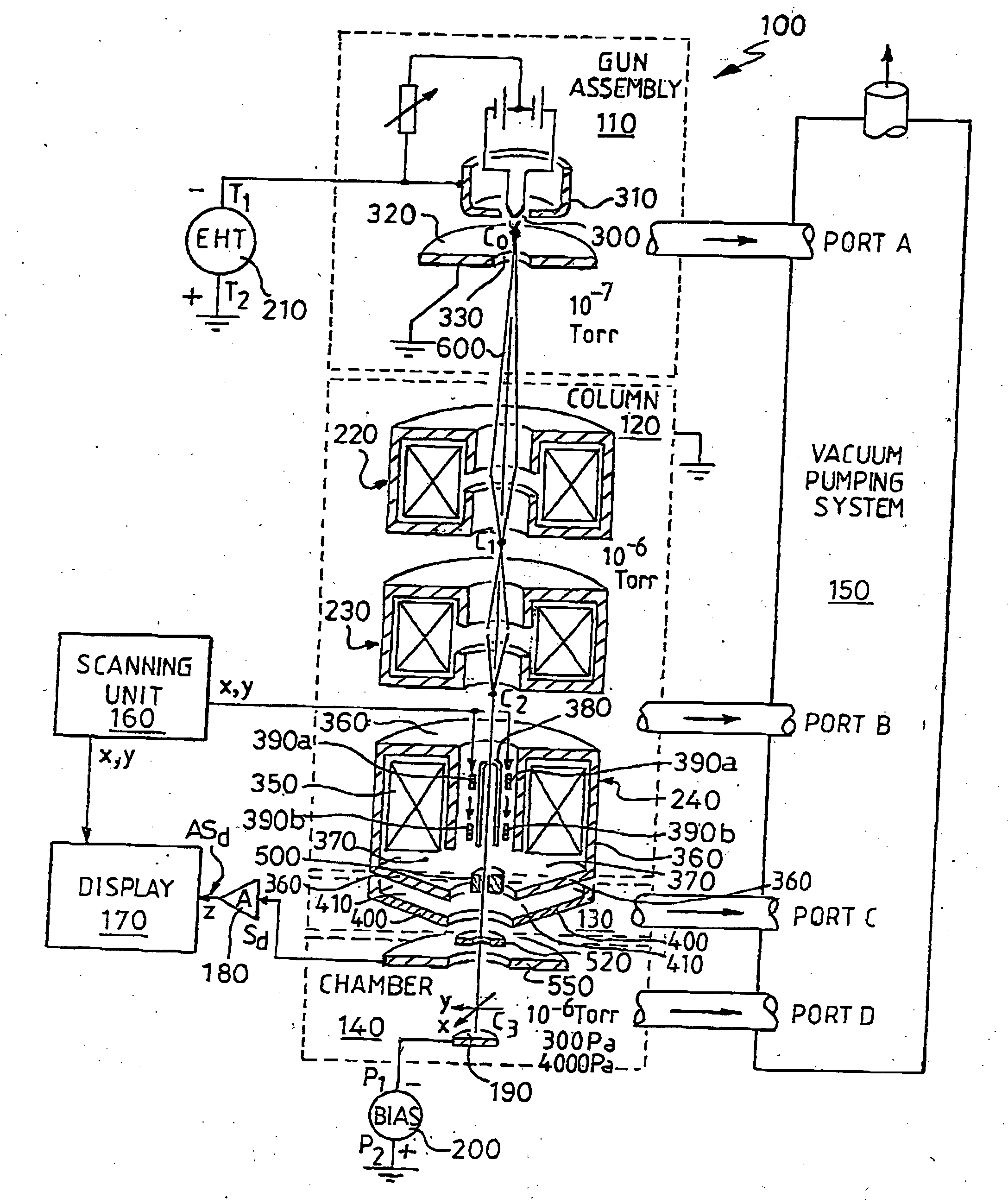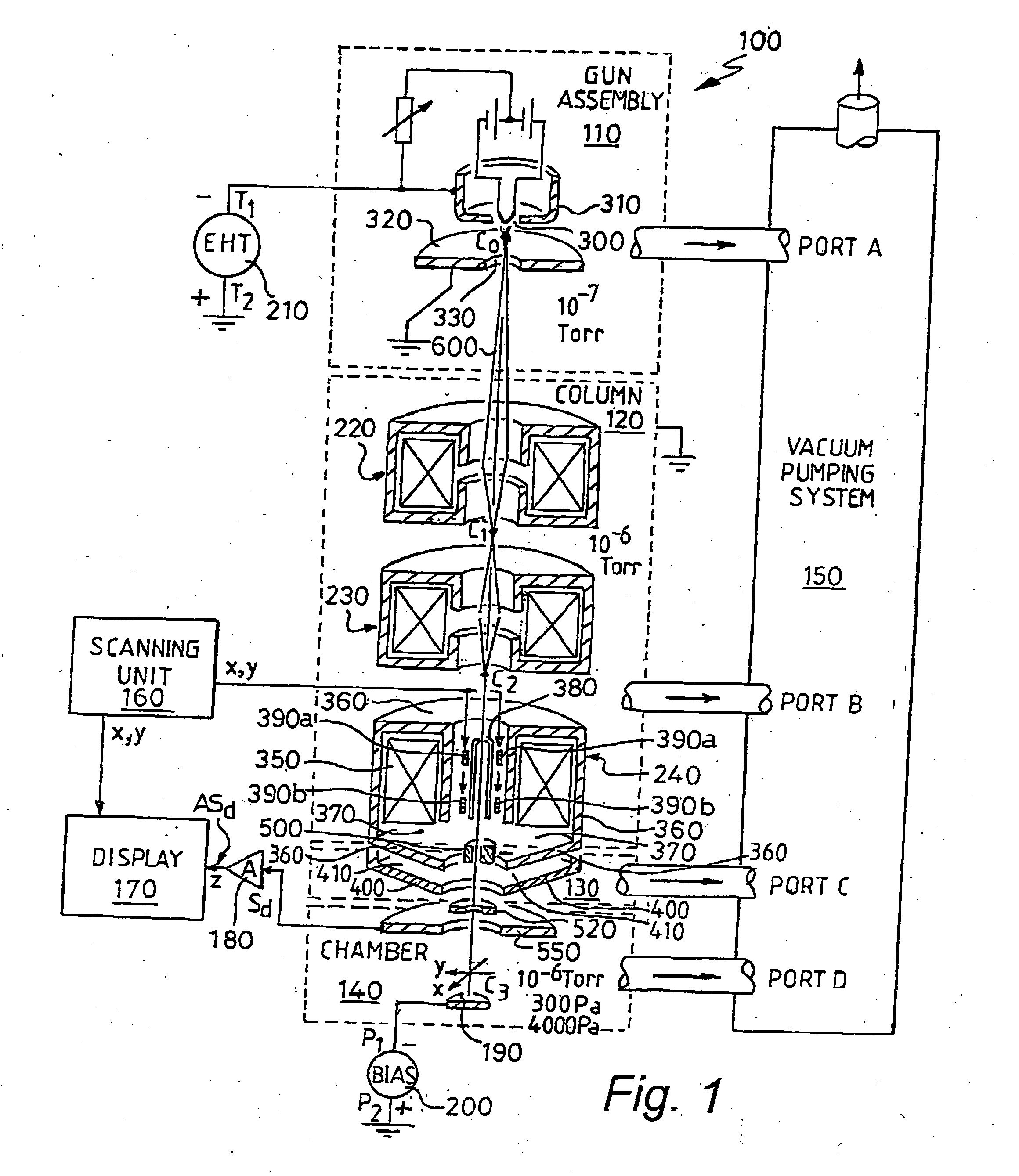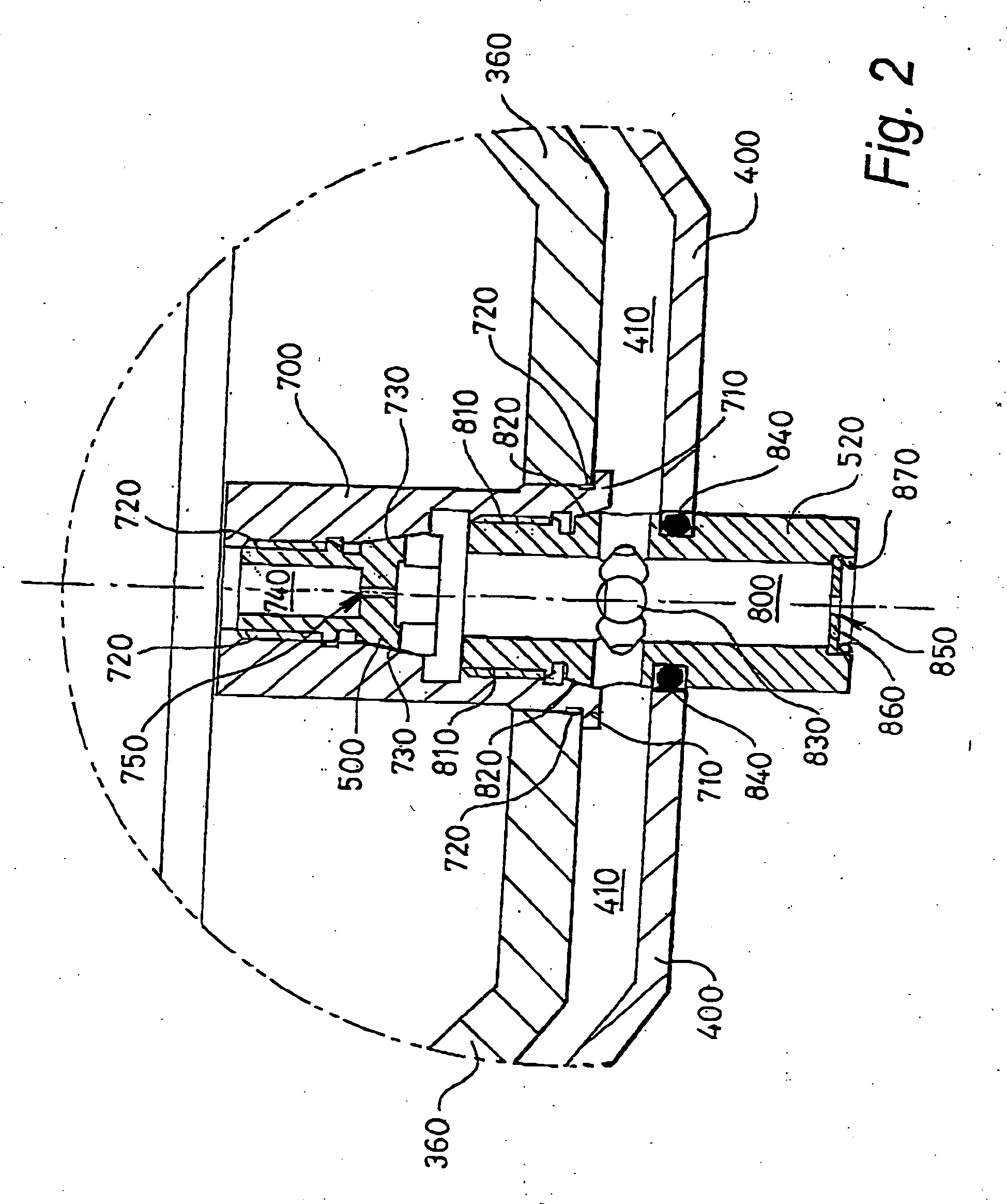Scanning electron microscope
a scanning electron microscope and electron microscope technology, applied in the field of scanning electron microscope, can solve the problems of electron probe blurring, operation of the adapted sem, and the inability to function with the series of differentially pumped diaphragms removed
- Summary
- Abstract
- Description
- Claims
- Application Information
AI Technical Summary
Benefits of technology
Problems solved by technology
Method used
Image
Examples
Embodiment Construction
[0040] Conventional SEMs suffer a problem that their samples must be maintained at a high vacuum in the order of 10.sup.-6 Torr pressure or lower. If higher operating pressures are employed, for example 10.sup.-4 Torr, electrical breakdown in their electron guns can occur and electron beam scattering by air molecules along their electron optical columns results in significant broadening of probes generated at their samples. Moreover, reduced operating lifetime of electron emitters employed in their guns arises as trace oxygen in their columns reacts with the emitters.
[0041] Moreover, samples in conventional SEMs require special preparation prior to viewing. Moisture has to be removed from the samples and then a thin coating of conductive material applied thereto, for example a 100 Angstroms thick layer of sputtered aluminium, to prevent sample charging when subjected to electron irradiation. For certain hydrated samples, for example biological tissue samples, such preparation can ma...
PUM
 Login to View More
Login to View More Abstract
Description
Claims
Application Information
 Login to View More
Login to View More - R&D
- Intellectual Property
- Life Sciences
- Materials
- Tech Scout
- Unparalleled Data Quality
- Higher Quality Content
- 60% Fewer Hallucinations
Browse by: Latest US Patents, China's latest patents, Technical Efficacy Thesaurus, Application Domain, Technology Topic, Popular Technical Reports.
© 2025 PatSnap. All rights reserved.Legal|Privacy policy|Modern Slavery Act Transparency Statement|Sitemap|About US| Contact US: help@patsnap.com



